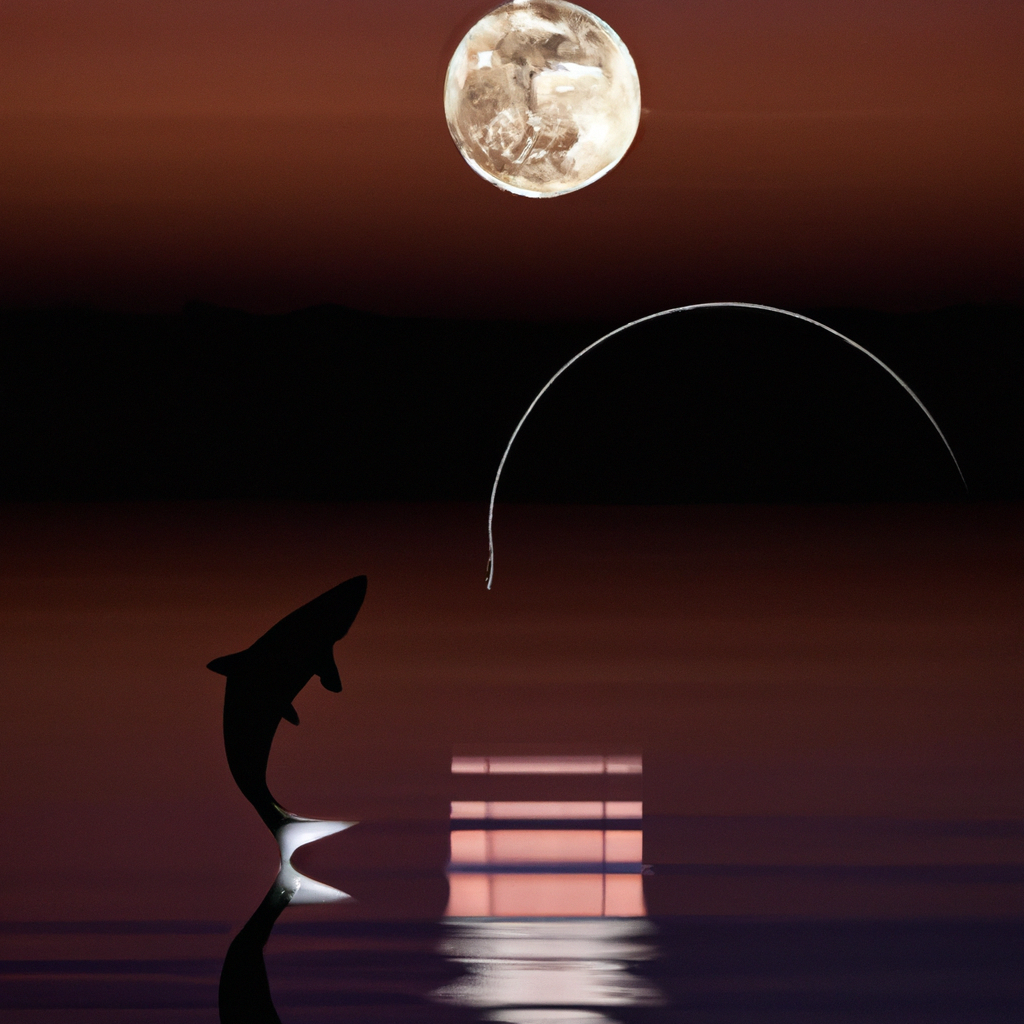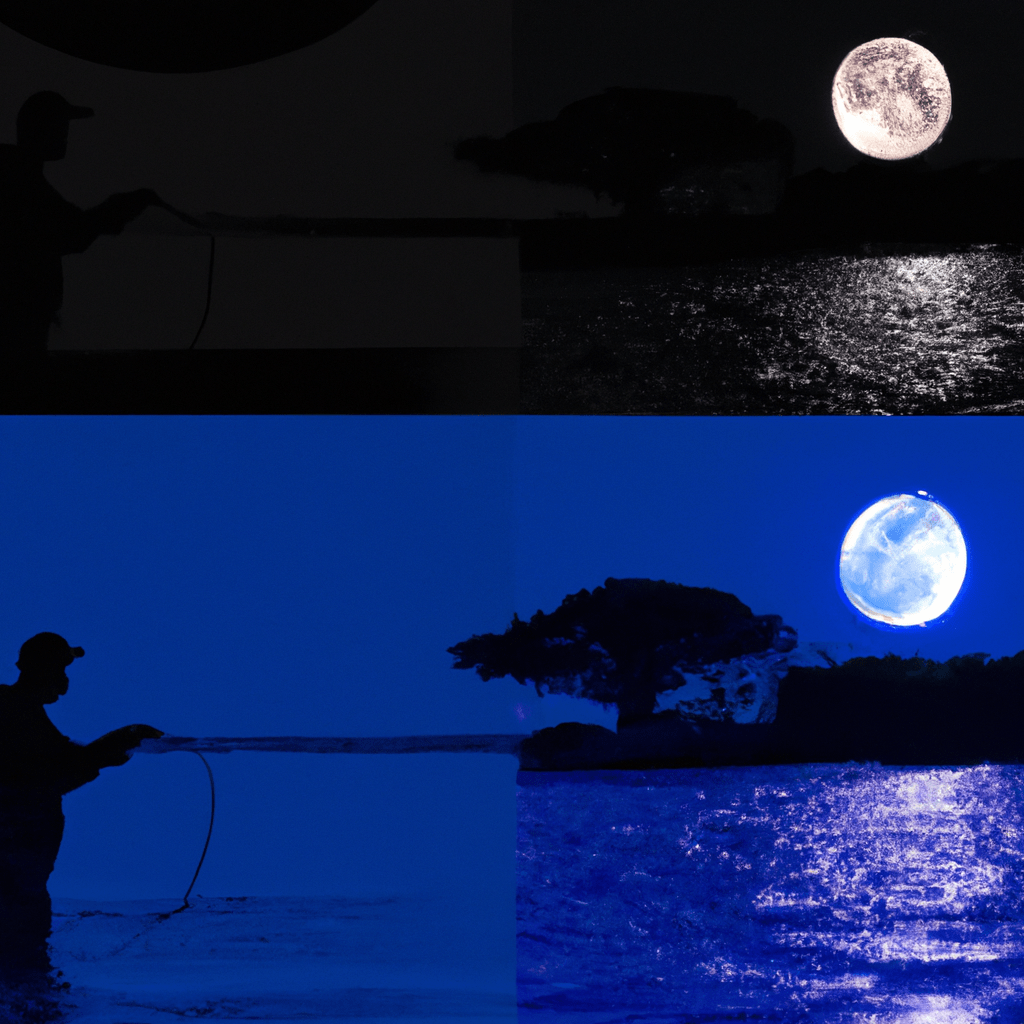As you cast your line into the dark, shimmering waters, the moon’s glow dances across the surface, illuminating the secrets below.
You are about to embark on a journey where moon phases hold the key to unlocking the elusive tarpon’s behavior. In this article, we will explore the impact of moon phases on tarpon fishing, unveiling the patterns and strategies that will guide you towards a successful catch.
Get ready to navigate the mystical realm of moon phases and discover the secrets it holds for tarpon anglers.
The Influence of Full Moon on Tarpon Behavior

You should be aware of the full moon’s influence on tarpon behavior. The effects of the full moon on tarpon behavior are well documented and have been the subject of scientific research for many years. During a full moon, tarpon tend to exhibit certain behavioral changes that can significantly impact their feeding patterns and overall activity levels.
One of the most noticeable effects of the full moon on tarpon behavior is their increased feeding activity. Tarpon are known to be nocturnal feeders, and during a full moon, they become even more active at night. This is believed to be due to the increased visibility provided by the bright moonlight, which allows tarpon to more easily locate their prey.
In addition to increased feeding activity, tarpon also tend to be more aggressive during a full moon. This can result in more aggressive strikes and a higher likelihood of hooking into a tarpon during this lunar phase.
Tarpon Feeding Habits During New Moon Phases

During new moon phases, tarpon tend to adjust their feeding habits in response to the reduced visibility and changes in light conditions. This period, known as the new moon feeding pattern, affects tarpon behavior and influences their feeding strategies. The reduced visibility caused by the absence of moonlight during new moon phases makes it challenging for tarpon to locate their prey. As a result, tarpon may rely more on their other senses, such as their lateral line system, to detect vibrations and movements in the water. Additionally, tarpon may also change their feeding locations, moving to areas with stronger currents or areas near structures that can provide cover and increase the chances of encountering prey. Understanding these tarpon feeding habits during new moon phases can be valuable for anglers looking to target tarpon during this specific period.
| New Moon Feeding Patterns | Tarpon Behavior During New Moon Phases |
|---|---|
| Reduced visibility | Tarpon adjust feeding habits |
| Reliance on lateral line system | Change in feeding locations |
| Seeking areas with stronger currents | Increased chances of encountering prey |
| Utilizing structures for cover and ambush points |
Understanding the Impact of Waxing and Waning Moon on Tarpon Fishing

The waxing and waning moon phases have a significant impact on tarpon fishing, affecting various aspects of their behavior and feeding patterns. Understanding this impact is crucial for successful tarpon fishing.
During the waxing moon phase, when the moon is transitioning from new to full, tarpon tend to be more active and aggressive in their feeding. This is because the increasing moonlight provides better visibility for the tarpon to locate their prey. As a result, anglers have a higher chance of encountering tarpon and enticing them to strike during this phase.
On the other hand, during the waning moon phase, when the moon is transitioning from full to new, tarpon tend to be less active and more elusive. This is because the decreasing moonlight makes it more challenging for the tarpon to locate their prey. Anglers may have to adjust their fishing techniques and be more patient during this phase.
Understanding the impact of waxing and waning moon phases on tarpon behavior is essential for maximizing fishing success during different lunar cycles and tarpon migration patterns.
Moon Phase Strategies for Successful Tarpon Catching

When should anglers employ specific moon phase strategies to increase their chances of successful tarpon catching? Moon phase planning plays a crucial role in tarpon migration patterns and can greatly impact the success of anglers. By understanding the different phases of the moon and their influence on tarpon behavior, anglers can strategically plan their fishing trips for optimal results.
To assist anglers in their moon phase strategies, the following table provides a breakdown of the various moon phases and their recommended fishing techniques:
| Moon Phase | Fishing Technique | Best Time to Fish |
|---|---|---|
| New Moon | Night fishing | Evening |
| First Quarter | Topwater lures | Morning |
| Full Moon | Live bait | Night |
| Last Quarter | Bottom fishing | Afternoon |
Moon Phase Timing: Key Factors for Tarpon Anglers

To maximize your chances of a successful tarpon catch, it’s important to pay attention to the timing of the moon phases and how they affect tarpon behavior. Moon phase planning is crucial for tarpon anglers as it can significantly impact their fishing experience. Understanding the lunar cycle patterns can help you determine the best times to go out on the water and increase your chances of a successful catch.
Here are four key factors to consider when timing your tarpon fishing trips:
- New Moon: During this phase, tarpon tend to be more active and feed aggressively. It’s a great time to target them as they’re more likely to strike your bait or lure.
- Full Moon: Tarpon are known to be more visible during full moon nights, making it easier to locate them. However, they may not be as active and feeding may be slower.
- Moonrise and Moonset: Tarpon tend to be more active during moonrise and moonset, especially during the first and last hours of these periods. This is a prime time to target them as they’re more likely to be actively feeding.
- Moon Position: Pay attention to the moon’s position in the sky. Tarpon are more active when the moon is directly overhead or directly beneath you. These positions create more gravitational pull, which can trigger their feeding behavior.
Frequently Asked Questions
What Are the Best Moon Phases for Tarpon Fishing?
The best moon phases for tarpon fishing depend on the tarpon feeding behavior, which is influenced by the moon phase and tide. Understanding these factors can help you maximize your chances of a successful fishing trip.
How Does the Moon Phase Affect Tarpon Migration Patterns?
During different moon phases, tarpon behavior is influenced by factors such as lunar illumination and gravitational pull. Understanding how the moon phase affects tarpon migration patterns is crucial for predicting their movements and optimizing fishing strategies.
Can Tarpon Be Caught During a New Moon Phase?
During a new moon phase, tarpon behavior may be influenced. Their feeding habits could vary depending on the darkness of the night. Understanding these factors can help you predict when and how to catch tarpon.
Are There Any Specific Moon Phase Tactics for Targeting Larger Tarpon?
When targeting larger tarpon, it is important to consider specific moon phase tactics. These strategies take into account the lunar influence on tarpon behavior and can greatly increase your chances of success.
Does the Duration of a Specific Moon Phase Affect Tarpon Activity?
The duration of a specific moon phase can indeed affect tarpon activity. During certain moon phases, such as the new and full moon, tarpon feeding behavior is typically more active due to the influence of tides.

